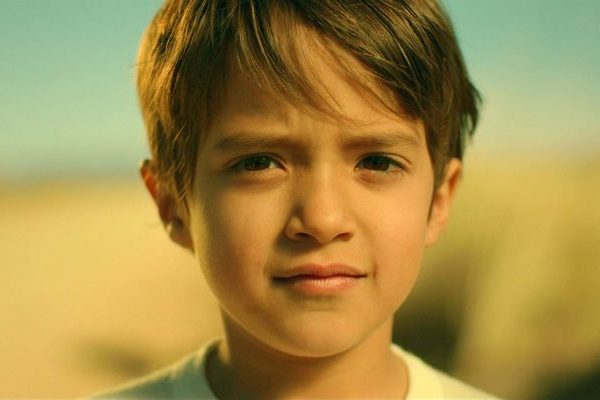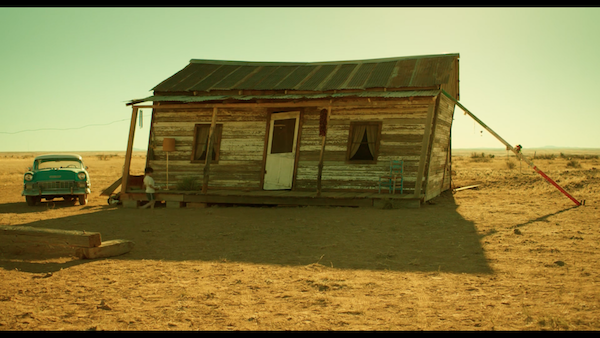A youngster turns to music to cope with loss in a modest but affecting fairy tale set in the New Mexico desert.

Marked by a distinctive visual style and superior work from its very young cast, A Boy Called Sailboat outperforms a thin script and tiny budget. But while writer and director Cameron Nugent has worthwhile goals, this feature is ultimately more diverting than involving.
Set in a desert town that has suffered nine years of drought, Sailboat is narrated by its eponymous hero, a small schoolboy played by Julian Atocani Sanchez. He lives in a tumbledown shack with his menacing father José (Noel Gugliemi) and uncommunicative mother (Elizabeth De Razzo).
Scavenging in a pile of junk, Sailboat finds a small guitar and begins to practice on it. After visiting his ailing grandmother in the hospital, he vows to write her a song. When it is finished he runs away from home to play it to her in person.
Nugent and cinematographer John Garrett use stark imagery to tell the story. Horizons fall low in the frame, buildings are isolated and bleached dry, and the sun reduces even primary colors to washed-out pastels. It’s an isolated and harsh world in which anything can happen, even magic.

As a director, Nugent likes to start in close—on a teacher holding a snake in a bag, or a the owner of a miniscule used-car lot—and then pull back, adding details to flesh out the characters and story. It’s a technique that lets him approach the plot from unexpected angles, and to keep viewers off guard by gradually revealing weird details. Like the light that streams through the cracks in Sailboat’s home at sunset, or the bizarre telenovelas that his grandmother memorizes.
At times there’s a hint of silent comedy to Nugent’s setups. At first we see three cars and a tiny shack in the used-car lot that’s pride of a hustler named Ernest (J.K. Simmons). Then the camera pulls back to reveal the moored wooden sailboat inexplicably drydocked off to the side.
Nugent also plays with our preconceptions of the characters. Covered with tattoos, José looks like a gang killer, but he turns out to be a remarkably sensitive and understanding father. (Credit Neal Gugliemi with finding a way past stereotypes and into Nugent’s offbeat world view.)
A Boy Called Sailboat is Nugent’s feature debut as director. A former child star on Australian TV, he has a real affinity for young actors. Sanchez is calm and unaffected even in demanding scenes, and gives the entire project the gravity it needs. He’s matched by Zeyah Pearson as Mandy, a preternaturally self-possessed young girl, and Keanu Wilson as Peeti, a soccer-obsessed classmate.
Nugent skirts around the central premise to A Boy Called Sailboat, Sailboat’s musical skills. The song the child writes is supposed to be so emotional and beautiful that it reduces listeners to tears, reunites angry spouses and siblings, heals the broken, and inspires the lost. Nugent opts to mute the soundtrack when Sailboat plays, a decision that makes sense (no song could match that build-up) but still feels like a cheat.
Alternating between genuine humor and forced whimsy, between valuable insights and rote preaching, A Boy Called Sailboat is simultaneously affecting and disappointing. But Nugent’s skewed world view and skill with youngsters should encourage adventurous viewers to give it a try.


